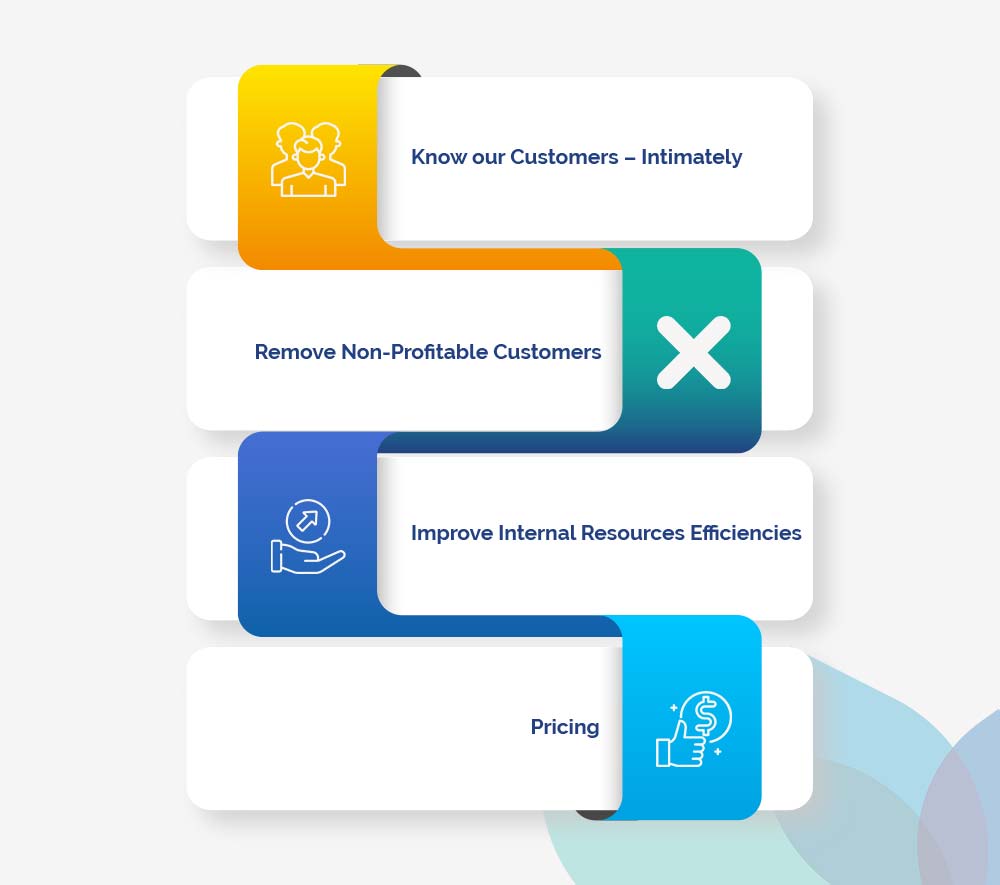Over the last few years, many companies have taken cost-cutting initiatives in an effort to retain profitability in their business through some very challenging times. Companies that survived the previous few years companies but are now feeling the market pressures are now contemplating this challenge as they are exposed to different industry cycles and economic difficulties.
Before starting a cost-cutting effort to save money, the question that needs to be asked is, “Will you be cutting too deep and actually stop the company’s ability to achieve growth and bounce back in the future?”
Companies and some professional service firms often make the error of making decisions based on their profit and loss statements and removing seemingly excessive items. Unfortunately, the figures that often stand out are marketing and sales headcount overheads and related expenses. They are typically a high cost to the business, and their relevant departments poorly justify their expenditure. Small businesses are usually more conservative when removing salespeople. In contrast, larger companies consider the short-term impact on cash flow and look to reinstate the team when the financial crisis has subsided.
Another cost-cutting strategy approach is to implement a cost based on a fixed percentage that reduces costs across all areas of the business. A proportionate amount is applied to all business costs, taking down the entire business’s size. This is a business strategy that can have long-term impacts on the company.
Both these approaches can immediately stifle your competitive position and ability to grow.
Before you embark on any cost reduction project, the first question that needs to be answered before cost-cutting commences is, “How can we maximise our sales force effectiveness to improve our competitiveness and market share?” The second question is, “What effective marketing strategy do we need to support the sales effort whilst minimising marketing spending?” These are two important drivers of your business, and without them, you will stop the company’s ability to grow in the future.
Once these two questions are answered, you can begin modelling the business and making effective decisions in relation to cost-saving structures to support those processes.
Often the answers to those questions can be complex and should not be taken without due consideration and sales analysis. Here are some of the areas that you can initially explore to assist in support of those two important questions.
Know our Customers – Intimately
In changing markets, customers’ priorities change. What was their priority last year does not necessarily mean it will be their priority in the coming year/s. In a simple example, your customer’s priority may have been upgrading equipment in the past. Still, with the changing economies, they have shifted to maintenance plans for existing equipment.
A change in customer priorities will impact your offer to the market, and sales and marketing need to be connected through the right conversations. This directly affects your cost budgets and the effectiveness of your sales force.
Another key factor is that it will change the mix of customers you require and the balance of new business vs. an existing business that is needed to sustain your company. Often in the lifespan of a business, the customers that were of value to you for the past decade are not the customers that will support you into the future.
Your company needs change, and customers’ needs change. However, this must be carefully analysed, and forecasts built on the future, not historical data. A poorly directed sales force focused on the wrong customers will compound your company’s losses.
Remove Non-Profitable Customers
Not all customers are good customers. For example, salespeople often don’t know when to quit a customer, and the company does not have a policy around sun-setting customers. The issue is that every customer consumes internal resources and salesperson time.
There is a line when it becomes more costly to serve the customer than the returns you gain from them. The customer needs to be reviewed for its current and potential value and a decision to keep or sunset them.
Companies can focus their internal resources on the most important and profitable customers as a cost-cutting measure and eliminate, reduce, consolidate, or outsource non-critical activities.
Improve Internal Resources Efficiencies
This is an ongoing requirement, but for many companies that have not broached this for the first time, you can apply an activity-based costing analysis to identify its most costly activities and then focus on reducing those costs.
Targeted cost-cutting reduces the likelihood of stifling growth in the future. Initiatives can be improving or automating quoting tools and processes and improving process repeatability. A deep analysis of activity-based costing can typically save 20 to 25 per cent (but can be higher or lower).
Salespeople need to be reviewed for their efficiencies, not just in the sales process but in their productivity and performance. In addition, sales leaders need to be checked for their management disciplines and alignment to a changing strategy. Typical savings in this area can be 20 -25 per cent, but outputs can increase growth opportunities by up to 50 per cent.
Pricing
This is the shortcut that many companies take when looking for increased profitability. Unfortunately, it can also be the one thing that puts the company out of the market on two levels. The first level is that you can price yourself out of the market to customers who are not purchasing.
The second level is that you can discount your way out of the market, making you no longer profitable. So, again, pricing impacts profitability more than almost all other means available to managers.
Companies must be in touch with market demands for their product and know their price points and potential market share at those price points. Sales leaders and salespeople need to be careful with discounting, especially during uncertain times. A $1 rise in pricing can deliver 30 cents, but a $1 cut often directly hits the bottom line by the same amount.
More focus and stricter pricing policies are often needed to avoid price wars and profit leakage. However, in uncertain times, it is especially important to define what those are.
In summary
All these changes can have a significant effect on profitability and sales performance. However, they should not be done without deep sales organisation analysis to ensure the right decisions are being made based on facts vs. reactive or shallow decisions that can have catastrophic effects on the business.
For a complete company analysis, there are 150-200 contributing factors related to the sales and marketing organisation that will define what changes, cuts, and improvements are required to continue growth in changing economies. The cost-cutting should be improving business, not just managing the short-term financial challenge.
We can assist you in a sales improvement review of your business to ensure it is best prepared for growth whilst operating with the lowest cost expenditure. Please contact our office to discuss your specific business requirements.
If you found this article helpful, follow us on LinkedIn or subscribe to Our Insights on the right-hand column of this page, to make sure you don’t miss new posts.
Articles you may also be interested in reading:
- When Cutting Costs Does Not Lead to Growth
- 12 Pricing Mistakes That Can Undermine Sales Outcomes
- Taking a Modern Approach to Sales Measurement
- How to Achieve Consistent Profitable Growth
© Y2022 Sales Focus Advisory. All rights reserved.

